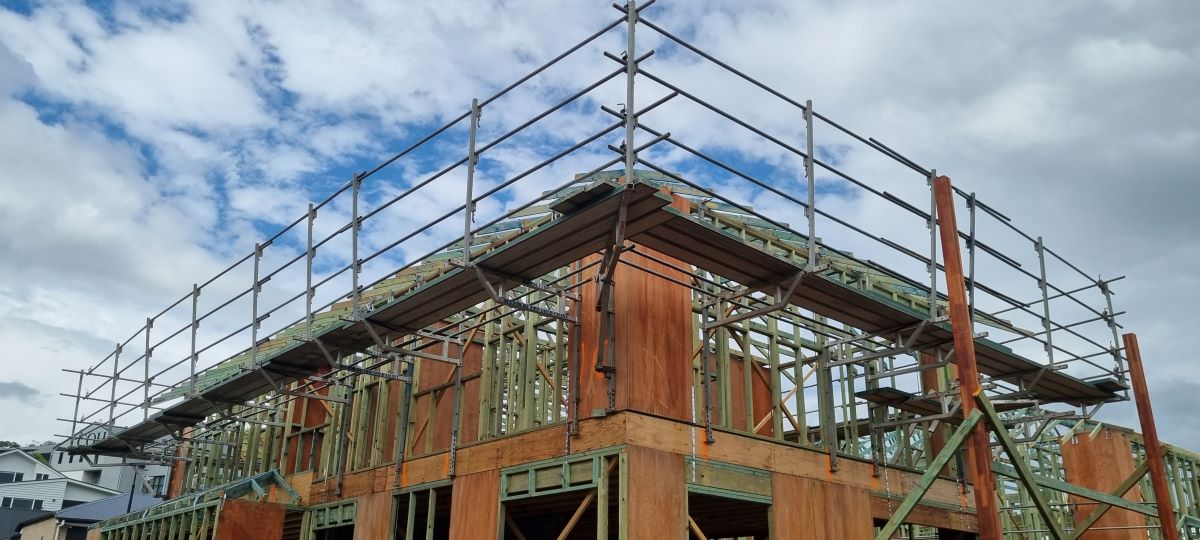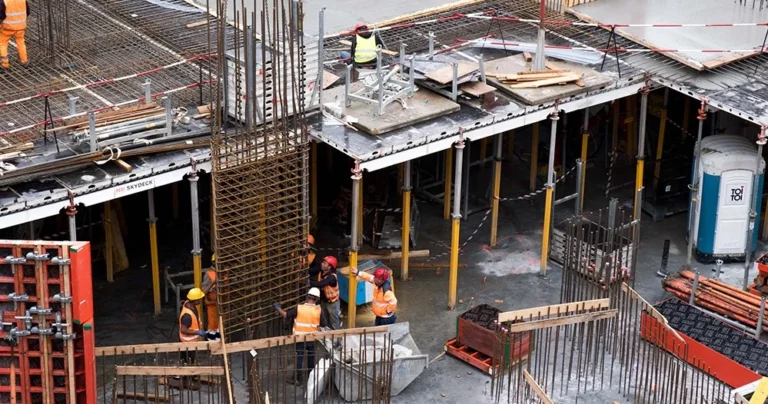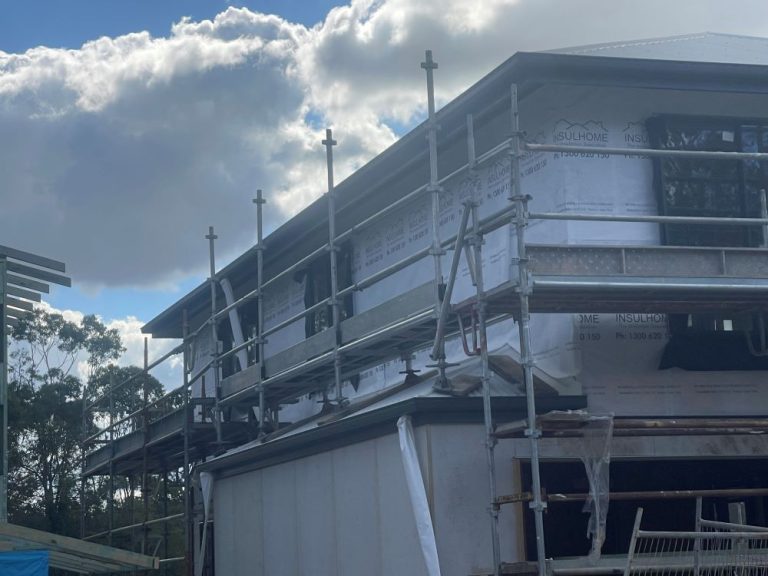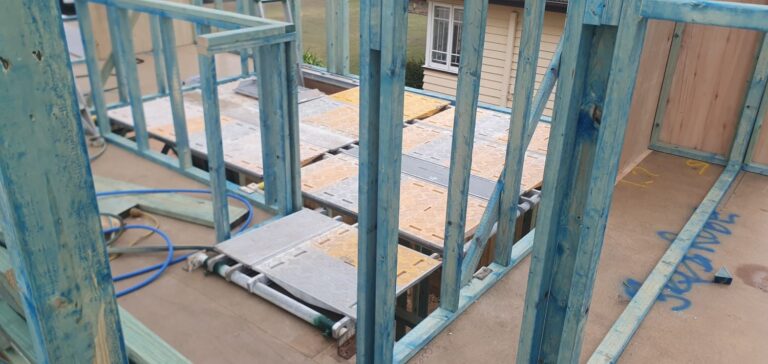Hang On Scaffold Hire
Hang On Protection
When it comes to scaffold safety, hang on protection plays a vital role in ensuring the safety of workers and anyone in the vicinity of the construction or renovation site. Hang on protection refers to the safety measures put in place to prevent falls from scaffolding structures.

Definition and Purpose of Hang On Protection
Hang on protection is a system of guardrails, barriers, and other safety devices that are securely attached to the scaffold structure. Its purpose is to create a barrier between workers and the edge of the scaffold to prevent accidental falls. Hang on protection is designed to meet specific safety standards and regulations to provide a safe working environment at elevated heights.
How Hang On Protection is Used in Scaffold Safety
Hang on protection is an integral part of roof scaffold safety, as it helps minimize the risk of falls and injuries. It typically consists of guardrails, mid-rails, toeboards, and other fall prevention systems that are properly secured to the scaffold structure.
The primary function of hang on protection is to create a physical barrier along the edges of the scaffold platform, preventing workers from accidentally stepping off or falling from the scaffold. Guardrails, which are installed along the perimeter of the scaffold, provide a continuous barrier to prevent falls. Mid-rails are positioned between the top rail and the scaffold platform, adding an extra layer of protection. Toeboards are installed at the base of the scaffold to prevent tools or materials from falling off the scaffold and potentially causing harm to those below.
By implementing appropriate hang on protection measures, scaffold safety is significantly enhanced. Workers can perform their tasks with confidence, knowing that there are adequate barriers to prevent falls. It is important to ensure that hang on protection is properly installed, regularly inspected, and meets the necessary safety standards.
Understanding the purpose and usage of hang on protection is crucial for anyone involved in construction or renovation projects.
For specific scenarios and situations that require hang on protection, as well as the benefits and advantages it offers
Edge Protection
Edge protection refers to the measures taken to secure the edges of a scaffold, providing a barrier that prevents falls and increases overall safety. It includes the installation of guardrails, toe boards, and other protective measures along the edges of a scaffold structure. The primary purpose of edge protection is to create a physical barrier that prevents workers from falling off the scaffold platform.
By providing a sturdy and secure boundary, edge protection helps to minimize the risk of accidents and injuries. It serves as a visual reminder of the scaffold’s boundaries and acts as a safeguard against unintentional slips or missteps.
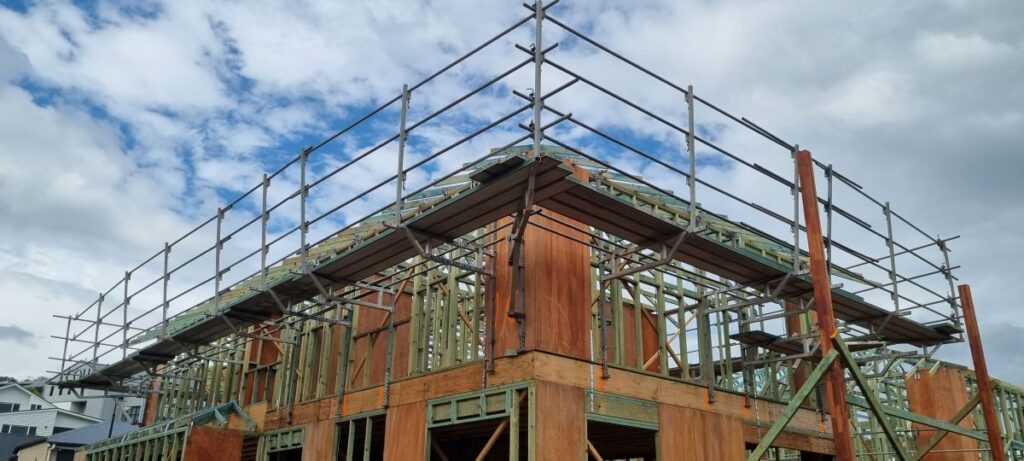
How Edge Protection is Used in Scaffold Safety
The specific requirements for edge protection may vary depending on factors such as the height of the scaffold and the type of work being carried out.
Common elements of edge protection include:
- Guardrails: These are horizontal barriers that are installed along the open sides of the scaffold platform. Guardrails should be at least 950mm high and have a midrail positioned halfway between the top rail and the platform.
- Toe Boards: Toe boards are installed at the base of the scaffold platform to prevent tools, equipment, or materials from falling off the scaffold. They are typically made of sturdy materials and should be at least 150mm high.
- Mesh Screens: In certain scenarios, such as work near public areas or overhead work, mesh screens may be used as additional protection to prevent objects from falling off the scaffold.
It is vital to adhere to the specific regulations and guidelines regarding edge protection when erecting scaffold. It is an integral part of scaffold safety, providing a physical barrier that helps prevent falls and ensure the well-being of workers.
Differences Between Hang On and Edge Protection
What is hang on protection and edge protection?
While both play a crucial role in ensuring the safety of workers and preventing falls, there are key differences between the two in terms of positioning, functionality, and usage.
Positioning and Location
Hang on protection is typically attached to the scaffolding structure itself. It is designed to provide a barrier or guardrail system that prevents workers from falling off the working platform. Hang on protection is positioned at the edges of the scaffolding, creating a secure boundary around the work area. It helps to create a safe working environment by minimizing the risk of falls from height.
Edge protection is used to secure the perimeter of the working platform. It is placed at the outermost edge of the scaffolding, acting as a barrier to prevent workers and materials from accidentally falling off the scaffold. Edge protection includes toe boards or guardrails that are installed along the edges of the scaffolding platform, creating a secure boundary.
Functionality and Usage
The functionality of hang on protection lies in its ability to provide a physical barrier that prevents falls. It is designed to withstand certain levels of force and impact, ensuring the safety of workers while they carry out their tasks on the scaffold. Hang on protection is often required by safety regulations and standards to maintain a safe working environment. It is crucial for workers to use and rely on hang on protection to prevent accidents and injuries.
Edge protection, serves a similar purpose but with a slightly different focus. It aims to secure the edges of the working platform, preventing individuals and objects from accidentally falling off the scaffold. Edge protection is an important measure to maintain the integrity of the scaffolding structure and ensure the safety of workers and the surrounding areas.
Understanding the differences between hang on protection and edge protection is essential when it comes to scaffold safety. Whether it’s ensuring the proper positioning of hang on protection or installing edge protection along the scaffold’s edges, these safety measures work together to safeguard the well-being of those working at heights.
When to Use Hang On Protection
Hang on protection plays a crucial role in ensuring scaffold safety, particularly in certain scenarios and situations. Understanding when to use hang on protection is essential for maintaining a secure work environment.
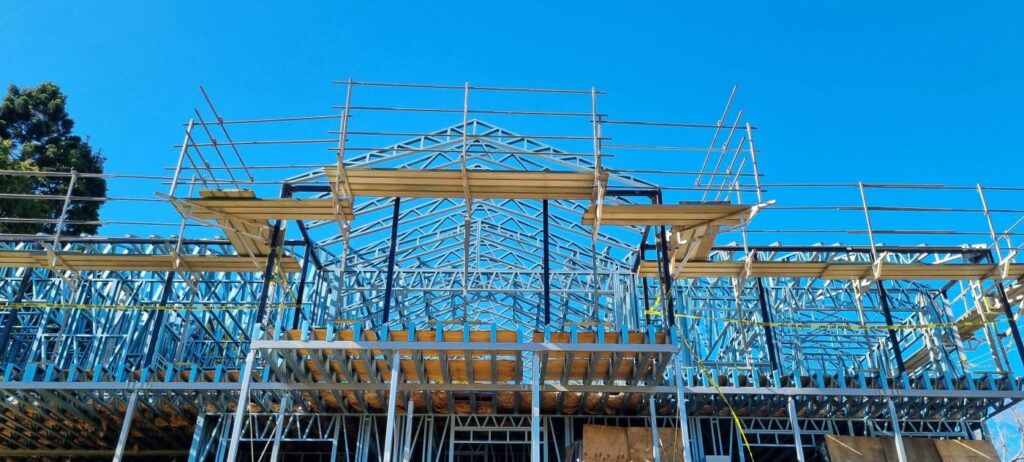
Scenarios and Situations Requiring Hang On Protection
Hang on protection is typically used when working on scaffolding at heights where there is a risk of falling objects. It serves as a barrier or guardrail system designed to prevent tools, materials, or debris from accidentally falling off the scaffold and potentially causing harm or damage.
Here are some common scenarios and situations that require the use of hang on protection:
- High-Rise Buildings: Working on high-rise buildings involves significant heights and potential risks. To ensure the safety of workers and those below, hang on protection must be installed along the edges of the scaffolding to prevent falling objects.
- Gutter Replacement: During gutter replacement or maintenance projects, scaffolding is often set up around the perimeter of the building. Hang on protection is essential in this scenario to prevent tools, debris, or old gutters from falling off the scaffold and causing harm to people or property. See more about roofing safety.
Benefits and Advantages of Hang On Protection
The use of hang on protection offers several benefits and advantages, including:
- Safety: Hang on protection acts as a physical barrier, preventing objects from falling off the scaffold and reducing the risk of injuries or accidents caused by falling debris.
- Compliance: OSHA and other regulatory bodies often require the use of hang on protection to ensure a safe working environment. By following these guidelines, companies can demonstrate their commitment to safety and avoid potential penalties.
- Protection: Hang on protection not only safeguards workers and bystanders but also protects surrounding property and equipment from potential damage caused by falling objects.
- Peace of Mind: By implementing hang on protection, workers can focus on their tasks without worrying about the risk of objects falling from the scaffold, promoting a more productive and stress-free work environment.
By prioritizing safety and adhering to regulations, individuals can ensure a secure work environment, protect themselves and others, and mitigate potential risks.
When to Use Edge Protection
Scenarios and Situations Requiring Edge Protection
Here are some common situations that require the use of edge protection:
- Working at Heights: Whenever work is being carried out at heights, such as on roofs, elevated platforms, or multi-story buildings, edge protection is necessary. It helps to create a barrier along the exposed edges, preventing workers from accidentally stepping or falling off the edge.
- Construction and Renovation Projects: During construction or renovation projects, scaffolding is often used to provide access to different areas. Edge protection is crucial in these situations to protect workers and pedestrians from potential hazards caused by open edges.
- High-Rise Buildings: When working on high-rise buildings, edge protection is essential to create a safe working environment. It helps to safeguard workers against falls from considerable heights and provides stability and confidence while carrying out tasks.
- Gutter Replacement: Gutter replacement often requires workers to access the roof area. Edge protection is necessary to ensure the safety of workers and prevent accidents caused by falls from the roof.
Benefits and Advantages of Edge Protection
Using edge protection on scaffolding offers several benefits and advantages that contribute to a safer work environment. Here are some key advantages of using edge protection:
- Fall Prevention: The primary purpose of edge protection is to prevent falls and accidents. By installing barriers along the exposed edges, it acts as a physical barrier, reducing the risk of workers or equipment falling from scaffolding.
- Safety Compliance: Edge protection is often a legal requirement in many jurisdictions. Complying with safety regulations and standards not only ensures the well-being of workers but also helps avoid potential legal issues and penalties.
- Increased Confidence: The presence of edge protection provides reassurance and confidence to workers, allowing them to focus on their tasks without the fear of falling. This can lead to increased productivity and efficiency.
- Protection for Pedestrians: Edge protection not only safeguards workers but also protects pedestrians walking near the construction or renovation site. It helps prevent objects or debris from falling off the scaffolding and causing harm to those below.
Using edge protection is a crucial safety measure when working on scaffolding. It is essential to assess the specific requirements of each project and ensure that edge protection is implemented wherever necessary. By doing so, you can create a secure working environment and minimize the risk of accidents and falls.

